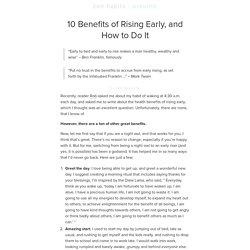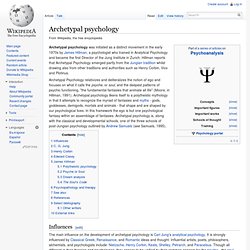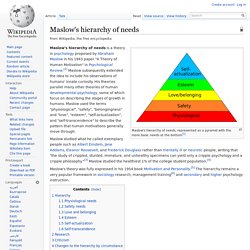

Megan Elizabeth
Error #1518. FAT KICKIN' Books sites. Hitchhiking. How to Wake Up Early. Meditation/relaxing playlist. Dealing With Fear. 10 Benefits of Rising Early, and How to Do It. “Early to bed and early to rise makes a man healthy, wealthy and wise” – Ben Franklin, famously “Put no trust in the benefits to accrue from early rising, as set forth by the infatuated Franklin …” – Mark Twain By Leo Babauta Recently, reader Rob asked me about my habit of waking at 4:30 a.m. each day, and asked me to write about the health benefits of rising early, which I thought was an excellent question.

Unfortunately, there are none, that I know of. However, there are a ton of other great benefits. Now, let me first say that if you are a night owl, and that works for you, I think that’s great. The Couch-to-5K ® Running Plan. By Josh ClarkPosted Saturday, 1 January, 2011 Couch to 5K ® | Beginning Running First off, you may be asking, "exactly how many miles is a 5K?

" A 5K is 3.1 miles. We're here to help you achieve your goal of beginning to run your first 5K. Too many people have been turned off of running simply by trying to start off too fast. You should ease into your 5K training plan gradually. It's easy to get impatient, and you may feel tempted to skip ahead in the program, but hold yourself back. Start Your 5K Training | A Few Minutes Each Week Each session should take about 20 or 30 minutes, three times a week. Be sure to space out these three days throughout the week to give yourself a chance to rest and recover between efforts. Run for time or run for distance. Epic Music. Leave The Canoe Behind. A young traveler approached a river while on her journey.

From all appearances, it was too deep to ford and too long to get around. After doing a bit of scouting around, she discovered a canoe that was left by another traveler. In haste, she grabbed the canoe and paddled to the other side. As soon as she landed, she thought: “I’m lucky that I found that canoe! I couldn’t have crossed the river without it. After three days of travel while carrying the canoe, she was exhausted. “Why are you carrying a canoe?
“A few days ago, I came across a river that I would have been unable to cross without this canoe. “Ah. With that, the young traveler dropped the canoe. It’s not uncommon for us to carry the canoes of our past with us along our daily journeys. Songs for the morning. Coffeefool. Calculate Your BMI - Standard BMI Calculator. Free Calorie Counter, Weight Loss Calculators, and Weight Loss Tutorial. Welcome to Google Docs. The Dream.
Whimsy. Diabetes Research. Sigmund Freud - Life and Work. Archetypal psychology. Archetypal psychology was initiated as a distinct movement in the early 1970s by James Hillman, a psychologist who trained in Analytical Psychology and became the first Director of the Jung Institute in Zurich.

Maslow's hierarchy of needs. Maslow's hierarchy of needs, represented as a pyramid with the more basic needs at the bottom[1] Maslow's hierarchy of needs is a theory in psychology proposed by Abraham Maslow in his 1943 paper "A Theory of Human Motivation" in Psychological Review.[2] Maslow subsequently extended the idea to include his observations of humans' innate curiosity.

His theories parallel many other theories of human developmental psychology, some of which focus on describing the stages of growth in humans. Maslow used the terms "physiological", "safety", "belongingness" and "love", "esteem", "self-actualization", and "self-transcendence" to describe the pattern that human motivations generally move through. Classical Adlerian psychotherapy. Classical Adlerian psychotherapy may involve individual psychotherapy, couple therapy, or family therapy, brief or lengthier therapy - but all such approaches follow parallel paths, which are rooted in the individual psychology of Alfred Adler.

History of Classical Adlerian Psychotherapy[edit] Alfred Adler was greatly influenced by early socialism and Freud. This can be seen in his early work and theories. He emphasized that individuals themselves can change their lives. Adler and Freud respected one another; however, Adler did not fully agree or accept Freud’s theories. Career[edit] Kübler-Ross model. The model was first introduced by Swiss-American Psychiatrist Elisabeth Kübler-Ross in her 1969 book, On Death and Dying, and was inspired by her work with terminally ill patients.[1] Motivated by the lack of curriculum in medical schools on the subject of death and dying, Kübler-Ross began a project which examined death and those faced with it while working as an instructor at the University of Chicago's medical school.

Kübler-Ross' project evolved into a series of seminars which, along with patient interviews and previous research became the foundation for her book, and revolutionized how the U.S. medical field takes care of the terminally ill. In the decades since the publication of "On Death and Dying", the Kübler-Ross concept has become largely accepted by the general public; however, its validity has yet to be consistently supported by the majority of research studies that have examined it[citation needed]. Stages[edit] The stages, popularly known by the acronym DABDA, include:[2]